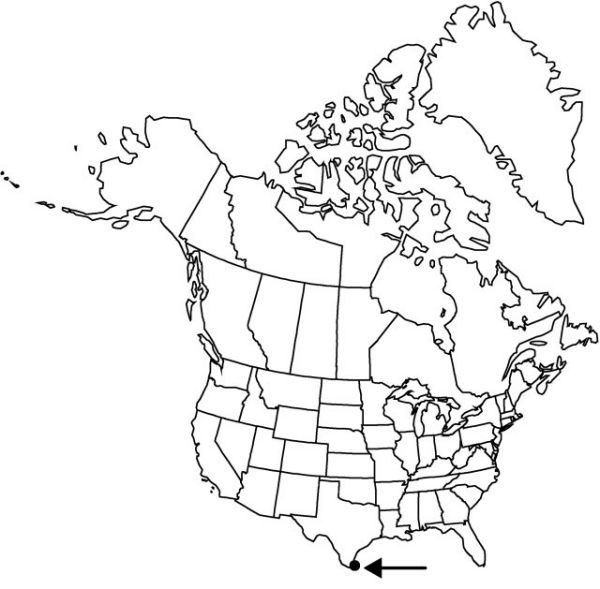Echeandia texensis
Novon 9: 331, fig. 1. 1999.
Storage roots enlarged 2–6 cm from corms, 1–3 cm. Leaves: basal 4–9, 33–60 cm × 10–20 mm, blade linear to elliptic, margins denticulate; cauline 4–5, blade long-acuminate, the proximal (4.3–)10–20 cm, frequently exceeding next node. Inflorescence 1, 0–3(–12)-branched, 55–105 cm, glabrous. Flowers nodding; tepals broadly elliptic, 12–19 mm, outer 2–3 mm wide, inner 5–8 mm wide; filaments inserted in covered pits, narrowly clavate, 5–9 mm; anthers connate, forming cone 4–5.5 mm, cone weakly to strongly tapered, 2–3 mm wide, apex broadly and deeply lobed, 1–1.5 mm; ovary 2–3.5 mm. Capsules oblong, 9–13 × 4–6 mm.
Phenology: Flowering Apr, Jun, Nov.
Habitat: Clay dunes, llanos, open places
Elevation: 0 m
Discussion
Echeandia texensis is distinguished from E. reflexa, a common species of eastern Mexico, by the short, broad anther cone, which has a wide, broadly and deeply lobed apex. The anther cone of E. reflexa is longer and narrower, and the apex is narrower and minutely lobed.
Selected References
None.
